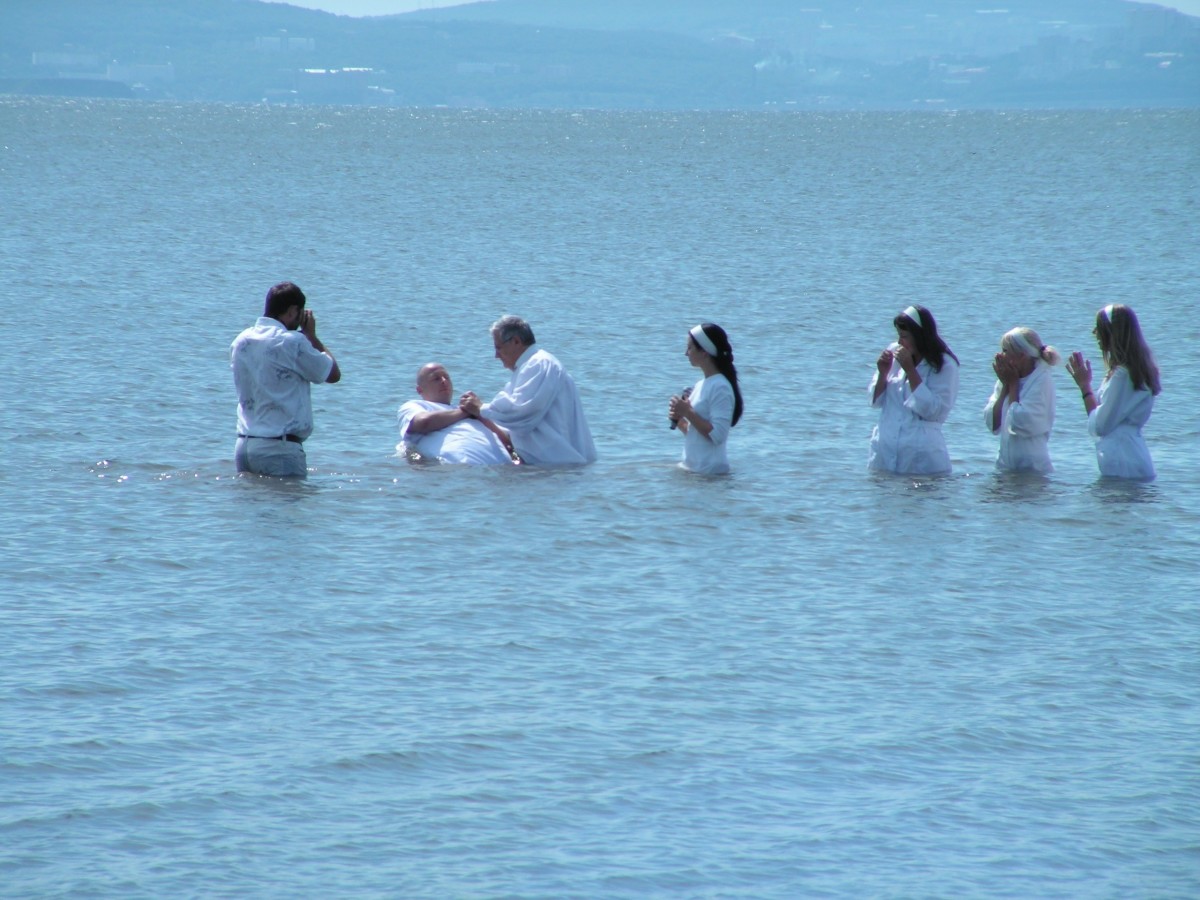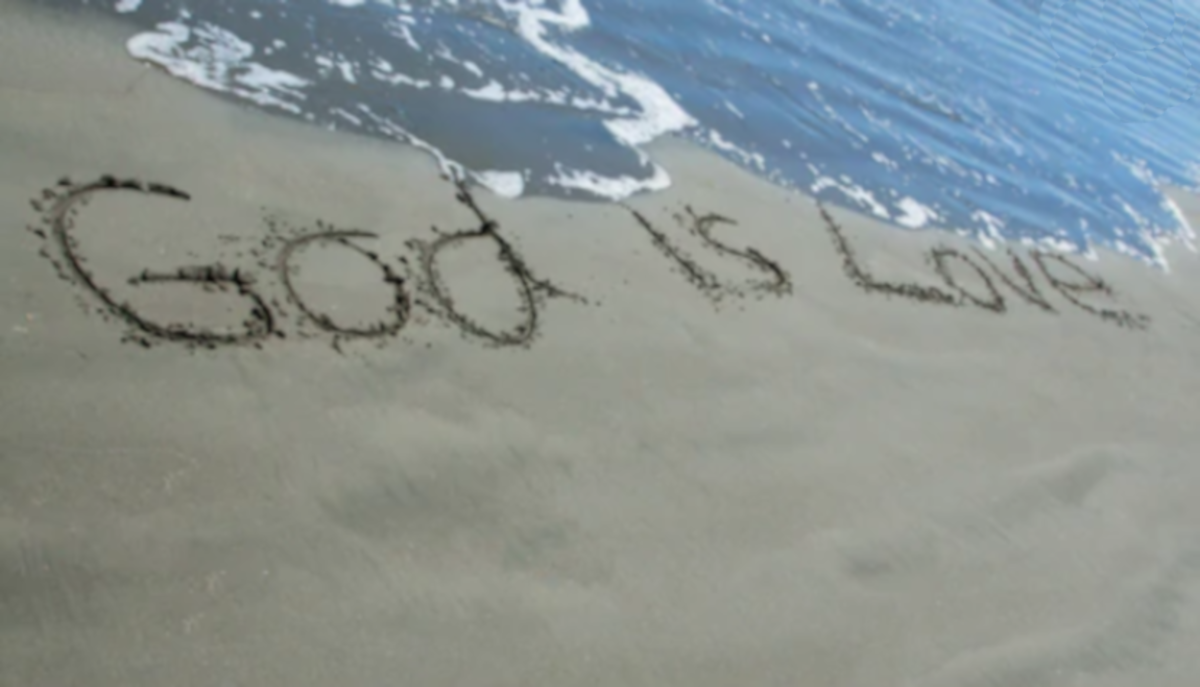Understanding the Baptism in Water

A Symbol Rooted Within the Various Rescue Stories of the Bible
What do you believe about water baptism? Do you believe that you receive salvation by being baptized or are you baptized because you have received salvation?
Baptism itself belongs to the tradition of prophetic signs. The Hebrew prophets, from time to time, performed acts to symbolize their message like Jeremiah making a yoke and wearing it or Ezekiel laying on one side in full view of the public and then on his other side. Isaiah going naked and Hosea marrying a harlot. These signs acted out the message. Likewise, this was part of Jesus’ regular ministry: when he washes the feet of his disciples (Jn 13:5) or when he tells them to shake off the dust from their feet as they leave an unwelcome house or town (Mt 10:14). Baptism and the Lord’s Supper belong to the tradition of prophetic signs.
The meaning of water baptism is a sign of purification—a sign of consecration. It is not a testimony to the world, but something we receive from the hand of God himself by the agency of the church.[i] Water baptism also has its symbolism rooted within the various rescue stories of the Bible from the creation in Genesis to the calvary account in the Gospels.[ii]
New Life. When creation took place, the Spirit of God, like a mighty wind, swept over the face of the waters separating the waters and calling forth dry land to appear (Ge 1:2,9). In the Greek, the word exodus is from exo meaning “out” and hodos meaning “door, way, or road.” We could say that the creation itself began with an exodus, an exit, a departure or going out from chaos to order. The Spirit of God rescues the earth from the formless void and darkness that engulfed it. The earth was baptized through the chaotic waters into a new life.[iii]
New Freedom. In the Old Testament we also have the great stories of Noah, Moses, and the Hebrew people. God rescues Noah from a great flood in an ark, the baby Moses from the Nile River in a basket, and the Hebrew people from Egyptian slavery and death in the dry land crossing of the Red Sea. These stories are all related in that God saved his people from certain death through a water-rescue[iv] exodus experience. And finally, after the death of Moses, Joshua led the people through the Jordan River into the Promised Land. The chosen people were baptized through the water into a new freedom.
New Covenant. In the New Testament, John the Baptist initiated a renewal movement by calling the people of God out into the Judean wilderness to confess their sins and be baptized in the Jordan River (Mk 1:5). Jesus himself submitted to John’s baptism in order to identify himself with those he had come to rescue in this new exodus movement (Mk 10:45). As Jesus was coming up out of the water, God’s Spirit descended upon him like a dove and a voice declared him to be the beloved Son of God—the Messiah of Israel who will fulfill the covenant plan of his Father. The people of God were baptized through the water into a new covenant.
New Creation. Jesus was also aware that his ministry would reach a climatic end in his own crucifixion—“a baptism to be baptized in” (Mk 10:38). And he chose the Passover, the great Jewish festival that commemorated the Hebrew exodus, as the time of his departure. Jesus even celebrated the Last Supper with his twelve disciples symbolically pointing back to the past exodus in the twelve tribes of Israel’s (God’s son)[v] slavery and deliverance as well as pointing toward the future exodus in his own (God’s Son) death and resurrection. The believers are baptized through the waters of baptism into Christ’s death and resurrection that they might walk into a new creation (Ro 6:3-4; Ro 6:6; Gal 2:19).
Based on the theme of the exodus and the people of God’s water-rescue experiences throughout scripture, Christian baptism was practiced early on as a prophetic sign of sanctification and means of entry into the family of God. In fact, it was Jesus, by all authority given him in heaven and on earth, who commanded his disciples, “Go therefore and make disciples of all nations, baptizing them in the name of the Father, and of the Son, and of the Holy Spirit… ” (Mt 28:19). And that is the given order or sequence: to make disciples or followers of Christ of all nations and then baptize them into the body of Christ, the church and new Christian family. First by believing and receiving salvation in the name of the Lord Jesus Christ, and then by obeying and being baptized by plunging into the water in the name of the Father, Son, and Holy Spirit. Water baptism is the last step into the final exodus that would lead the people of God toward a new life, bring a new freedom, fulfill a new covenant, and enter a new creation.
We need to note that not every believer from the get-go will experience the saving love of Christ cleansing and transforming his or her life through the act of water baptism. But the believer will most certainly live out the truth of what happened to them in baptism. Baptism does matter in the life of the believer because the reality that is sure to follow will validate its meaning. We could liken water baptism with the symbol of a wedding ring. The act of placing the ring on each other’s finger symbolizes the sacred union between husband and wife. The consummation of the marriage follows after the symbolic ritual when the two become one flesh (Gen 2:24).
What happens to those who have been baptized and “have tasted the goodness of the word of God and the powers of the age to come,” (Heb 6:5-6) and then have fallen away rejecting the faith? It was no different with the children of Israel who rebelled against the LORD after being rescued from a life of slavery and miraculously delivered through the Red Sea (Dt 31:27). Those who rebel against God can’t get un-baptized. While they are still united with Christ in this sacred relationship, they are considered disobedient family members, not outsiders, who have lost their fellowship with the Lord. We can still love these wayward sinners and yet hate their sin that separates us from having true fellowship with Christ and one another. For we know that our Father is “a gracious God and merciful, slow to anger, and abounding in steadfast love, and ready to relent from punishing” (Jon 4:2) his lost prodigal children.
Endnotes
[i] Colin Brown, Systematic Theology II: Christology and Soteriology (Pasadena: Fuller Theological Seminary Notes, 1993), 70.
[ii] N. T. Wright, Simply Christian: Why Christianity Makes Sense (New York: HarperSanFrancisco, 2006), 212.
[iii] Ibid., 212-215. The theme of “through the water” is based on Wright’s sweeping presentation of baptism from the creation, covenant, new covenant, and new creation with Jesus at the center of this historical biblical account.
[iv] Ibid., 212. The water baptism is likened to the rescue-through-water experiences of the people of God.
[v] Exodus 4:22. The LORD instructed Moses, “Then you shall say to Pharaoh, ‘Thus says the LORD: Israel is my firstborn. I said to you, “Let my son go that he may worship me.” But you refused to let him go; now I will kill your firstborn son.’” [Italics mine]. God identified himself with the nation of Israel, in the manner of a relationship between a father and his son. Jesus, the Son of God, identified himself with Israel, as the nation’s representative, through the waters of John’s baptism. The Holy Spirit descended upon him and the Father declared him his beloved Son.
Copyright 2009 Gicky Soriano. All rights reserved.
More Understanding Series:
- Understanding God's Blueprint for Marriage
Marriage is a divine institution, ordained and regulated by God’s word. It is found in every human culture. God formed humanity as male and female with the intent that a man leave his father and mother... - Understanding the Gifts of Healing
The biblical account of healing can answer many of our questions today. How much of what the bible is saying on this subject is clouded by our theological tradition? Is it possible to be healed from our... - Understanding Once Saved Always Saved
What is your belief on the eternal security of a Christian? Can Christians lose their salvation? Is it possible for a follower of Christ to be absolutely sure that he or she will be found in... - Understanding the Baptism in Water
What do you believe about water baptism? Do you believe that you receive salvation by being baptized or are you baptized because you have received salvation? Baptism itself belongs to the tradition of... - Understanding Spiritual Gifts Today
What is your belief relative to spiritual gifts? Do you believe all the spiritual gifts remain available today or do you believe that some gifts ceased with the apostolic era? The issue of whether or... - Understanding the Faith that Works
In the letter of James we read, “For just as the body without the spirit is dead, so faith without works is also dead” (Jas 2:26). The Christian is exhorted to exercise a demonstrative faith that is...
Recommended reading:









